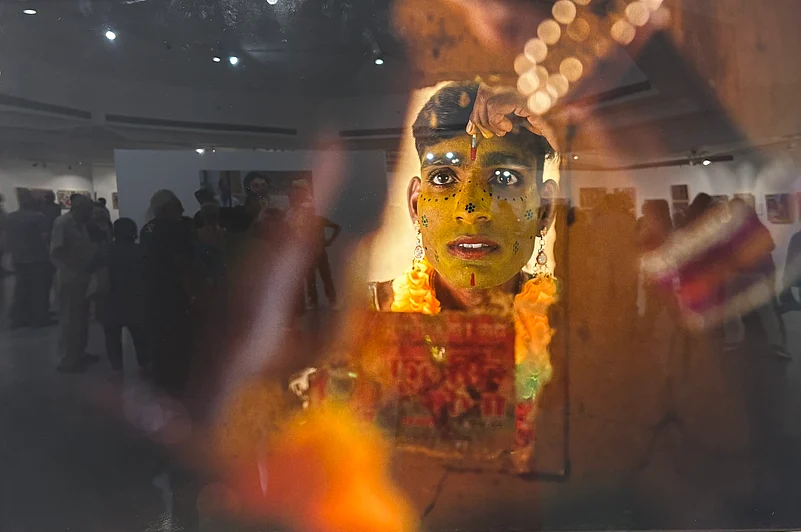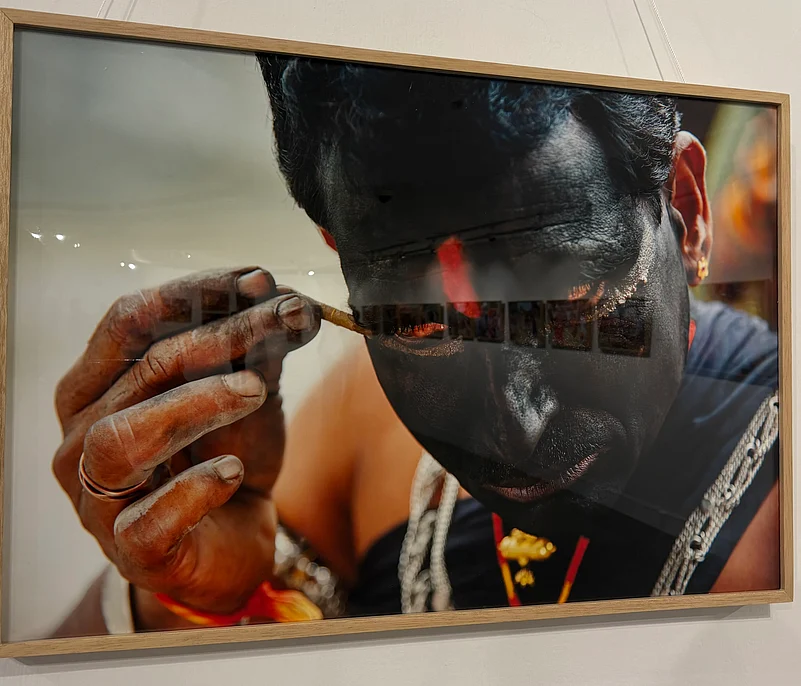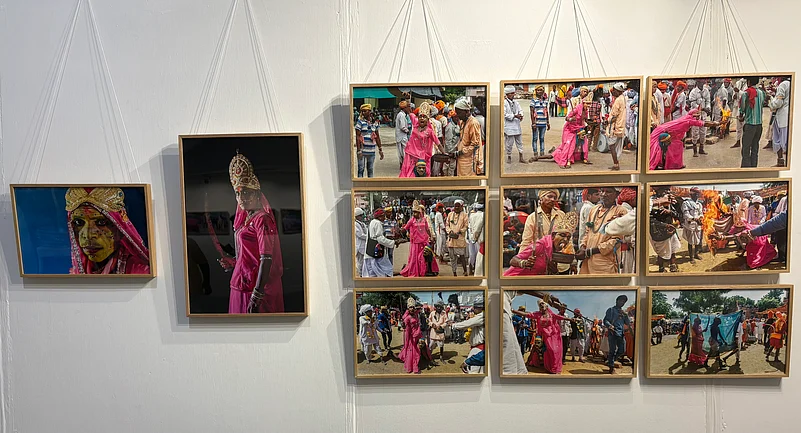There are ancient customs that transcend the confines of social prejudices, art forms that endure as emblems of identity and resilience. Aditi Ghosh Mehta, author and curator of ‘Playing with the Goddess: Gavri of the Mewar Bhils’ highlights how Gavri performances and dances asseverate a sense of change in society. “It's a dance of inversion. I mean, the people who are the lower caste, untouchable still, they are now the ascendants, and you have Brahmins, Baniyas touching their feet,” she says.
The three-volume series showcases powerful visual storytelling centered on Gavri, captured through the lenses of Sudharak Olwe, Pradeep Paliwal, Chetan Laxkar, and Mamata Mehta. On display until August 1, the exhibition seeks to capture the essence of this traditional performance art and its evocative reflection of contemporary socio-political realities.
Gavri - The Mystical Celebration
Gavri, a 40-day festival celebrated in the four Mewar districts of Udaipur, Rajsamand, Bhilwara and Chittorgarh in September each year is a ritual dance-drama performed by the Bhils, the second largest tribal community in India who are geographically dispersed across India’s central heartland.

The oral tradition of Gavri, passed down through generations, witnesses men taking on women’s roles and embracing the feminine divinity by embodying the Gavari mata herself. “Embracing the femininity allows far more equal sexual relations and social relations among the Bhil tribe,” says Mehta.
Gavri symbolises a series of khels and skits portrayed by the Bhil community in celebration of the goddess Gorkhiya who is believed to come into their midst. Play-acting is merged with song and dance to convey contemporary socio-political themes. With this, the Bhil community travels from village to village where their sisters and daughters have been married. “It is literally a play with the Goddess because Gorkha, of course, is the name of Parvati, the one goddess who demands happiness, laughter, and parody as her gift. She is created and willed, and for 40 days, you basically dance and entertain her,” says Aditi.

The Social Disruption
The social system upturns as the social, economic, political and caste superiors accept the ritual, ceremonial and religious superiority of the Bhils. Brahmins, Rajputs and upper castes touch the feet of the ‘khelyas’ as the dancing gods who have descended to earth. Bhil's social status is significantly elevated in the village context.
“I feel that the unity of the community is brought to the fore during the celebrations. Praying, not just for their own ulterior motives but also portraying the larger evils in society is something that is very fascinating,” says Sudhakar Olwe, a photojournalist who captured the community’s essence through his pictures.
“There are stories that depict a Devi who consumes evil—represented as a dark ball embodying negativity or destruction. She swallows it to ensure that the rest of the world may live in peace," he explains. He adds that such "powerful themes, expressed through the vigor of song and dance, instill a sense of moral clarity and spiritual refinement."
The Culmination
As drums and chants echo through the hills of Mewar, the central narrative of the Gavri emerges on the 39th night of the 40-day cycle of Sawa Mahina (one and a quarter month). It is performed at three in the morning inside the majestic 'Upat-Nipat ka Khel'. The Bhils believe that the most important moral act is the play itself – to walk, dance, sing, grieve, live and be. The rest, according to the Bhil Khelya, are all Maya.
“The verses really get into you, you really become a part of them. When I started photographing them, I witnessed how all castes converge and there is a liberation from the caste system,” says Sudhakar.
In a country where caste divisions still persist through centuries, Gavri stands as a reminder that even for 40 days, divinity can descend to disrupt, dance, and dissolve the hierarchies of the world.















